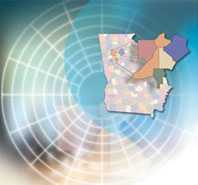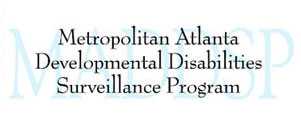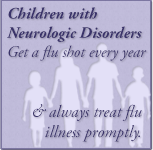Metropolitan Atlanta Developmental Disabilities Surveillance Program (MADDSP)


The Centers for Disease Control and Prevention’s (CDC) Metropolitan Atlanta Developmental Disabilities Surveillance Program (MADDSP) estimates the number of children with selected developmental disabilities in metropolitan Atlanta. CDC began tracking the prevalence of intellectual disability, cerebral palsy, hearing loss, vision impairment, and epilepsy among children 10 years of age in 1984 as part of the Metropolitan Atlanta Developmental Disabilities Study (MADDS). The success of that study prompted CDC to establish MADDSP in 1991 in order to estimate the prevalence of children in the metropolitan Atlanta area who had one or more of four developmental disabilities—cerebral palsy, hearing loss, intellectual disability, and vision impairment. Autism spectrum disorder were added to the program in 1996. MADDSP served as the model for the creation of the Autism and Developmental Disabilities Monitoring (ADDM) Network and, since 2000, has participated as one of the sites in the ADDM Network.
The goals of MADDSP are to:
- Provide data about how common the selected developmental disabilities are among 8-year-old children in metropolitan Atlanta.
- Describe the characteristics of children with one or more of the five developmental disabilities tracked by MADDSP.
- Assess possible relationships between birth characteristics, such as low birthweight and premature delivery, and the occurrence of developmental disabilities.
- Provide a framework for initiating special studies.
Methods
MADDSP was established in 1991 to estimate the prevalence of children who had one or more of four developmental disabilities—intellectual disability, cerebral palsy, hearing loss, and vision impairment—in five counties (i.e., Clayton, Cobb, DeKalb, Fulton, and Gwinnett) in metropolitan Atlanta. In 1996, autism spectrum disorders were added as a fifth developmental disability.
MADDSP identifies these children through a process known as active record review. In this process, records are reviewed every other year for children who are or will turn 8 years of age within the year of interest and live with a parent or guardian who is a resident of one of the five counties in which data are tracked by MADDSP. Trained abstractors review records and abstract detailed information at multiple health and education sources (such as clinics and schools) in metropolitan Atlanta that evaluate and provide services to children with developmental disabilities. The abstracted information from all sources for a given child is then reviewed by trained clinicians. These trained clinicians determine whether the child meets the criteria for one or more of the developmental disabilities that MADDSP tracks.
MADDSP included children 3 to 10 years of age for the period 1991–1994, as well as for 1996 for autism spectrum disorder. Since 2000, MADDSP has focused on 8-year-old children for all developmental disabilities monitored. Previous studies have shown that, by this age, most children with developmental disabilities had been identified for services.
MADDSP Criteria and Definitions
MADDSP includes children:
- Who are 8 years old during the year of interest;
- Whose parent(s) or legal guardian(s) lives in one of the five selected counties in metropolitan Atlanta at some time during the year of interest; and
- Who have one or more of the five tracked developmental disabilities.
Developmental Disabilities Tracked by MADDSP
Autism Spectrum Disorder (ASD)
Autism spectrum disorder (ASD) is a developmental disability that can cause significant social, communication and behavioral challenges. There is often nothing about how people with ASD look that sets them apart from other people, but people with ASD may communicate, interact, behave, and learn in ways that are different from most other people. The learning, thinking, and problem-solving abilities of people with ASD can range from gifted to severely challenged. Some people with ASD need a lot of help in their daily lives; others need less.
A diagnosis of ASD now includes several conditions that used to be diagnosed separately: autistic disorder, pervasive developmental disorder not otherwise specified (PDD-NOS), and Asperger syndrome. These conditions are now all called autism spectrum disorder.
Read the technical surveillance case definition of autism spectrum disorder »
Learn more about CDC’s research and tracking of autism spectrum disorder »
Cerebral Palsy
Cerebral palsy is a group of disorders that affect a person’s ability to move and maintain balance and posture. Cerebral palsy is caused by abnormal development of the brain or damage to the developing brain that affects a child’s ability to control his or her muscles. Cerebral palsy does not get worse over time, though the exact symptoms can change over a person’s lifetime. All people with cerebral palsy have problems with movement and posture. Many also have related conditions such as intellectual disability; seizures; problems with vision, , or speech; changes in the spine (such as scoliosis); or joint problems (such as contractures).
Read the technical surveillance case definition of cerebral palsy »
Learn more about CDC’s research and tracking of cerebral palsy »
Hearing loss
A hearing loss can happen when any part of the ear is not working in the usual way. This includes the outer ear, middle ear, inner ear, hearing (acoustic) nerve, and auditory system. Hearing loss can vary greatly among people and can be due to any number of causes.
Read the technical surveillance case definition of hearing loss »
Learn more about CDC’s research and tracking of hearing loss »
Intellectual disability
Intellectual disability is a term used to describe when there are limits to a person’s ability to learn at an expected level and to function in daily life. Levels of intellectual disability vary greatly among children, from mild to very severe.
Read the technical surveillance case definition of intellectual disability »
Learn more about CDC’s research and tracking of intellectual disability »
Vision impairment
Vision impairment means that a person’s eyesight is not corrected to a “normal” level. Vision impairment can vary greatly among children. It can be caused by damage to the eye itself, by the eye being shaped incorrectly, or even by a problem in the brain.
Read the technical surveillance case definition of vision impairment »
Learn more about CDC’s research and tracking of vision impairment »
- Page last reviewed: April 21, 2017
- Page last updated: September 14, 2015
- Content source:



 ShareCompartir
ShareCompartir